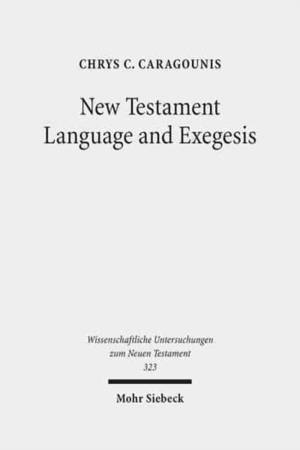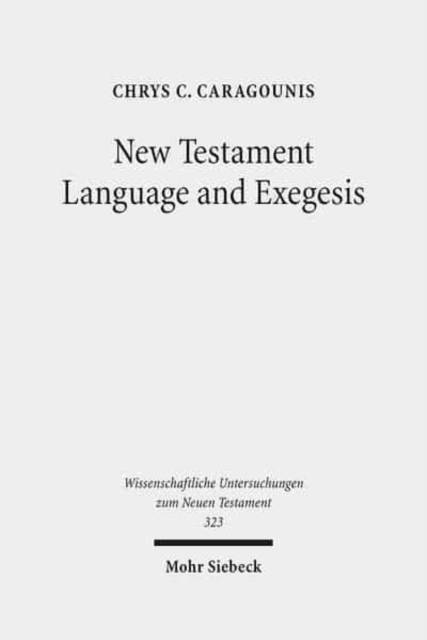
- Afhalen na 1 uur in een winkel met voorraad
- Gratis thuislevering in België vanaf € 30
- Ruim aanbod met 7 miljoen producten
- Afhalen na 1 uur in een winkel met voorraad
- Gratis thuislevering in België vanaf € 30
- Ruim aanbod met 7 miljoen producten
Zoeken
Omschrijving
A sequel as well as an advance on the author's study The Development of Greek and the New Testament (WUNT 167), Chrys C. Caragounis applies the diachronic or holistic approach to the exegesis of the New Testament in this volume. He takes up for discussion a number of grammatico-syntactical areas of the New Testament and shows that previous exegesis, misguided by a myopic view of and approach to the Greek language, has not infrequently played havoc with the meaning and interpretation of its text. He studies the language of the New Testament in the light of historical developments that changed Greek from classical to 'Hellenistic', then to Byzantine, and finally to Neohellenic. These explain the oddities or peculiarities of the New Testament Greek, showing them to be a part of a much larger process at modernizing the language. By drawing upon the whole linguistic evidence available, the reader is led to a more genuine, more correct understanding of the New Testament text.
Specificaties
Betrokkenen
- Auteur(s):
- Uitgeverij:
Inhoud
- Aantal bladzijden:
- 400
- Taal:
- Engels
- Reeks:
- Reeksnummer:
- nr. 323
Eigenschappen
- Productcode (EAN):
- 9783161527647
- Verschijningsdatum:
- 1/01/2014
- Uitvoering:
- Hardcover
- Formaat:
- Genaaid
- Afmetingen:
- 157 mm x 229 mm
- Gewicht:
- 798 g

Alleen bij Standaard Boekhandel
+ 334 punten op je klantenkaart van Standaard Boekhandel
Beoordelingen
We publiceren alleen reviews die voldoen aan de voorwaarden voor reviews. Bekijk onze voorwaarden voor reviews.











